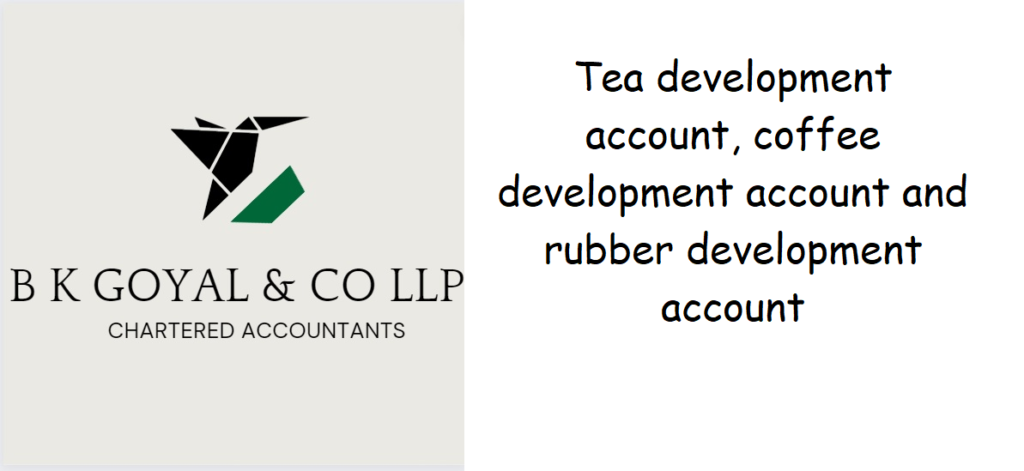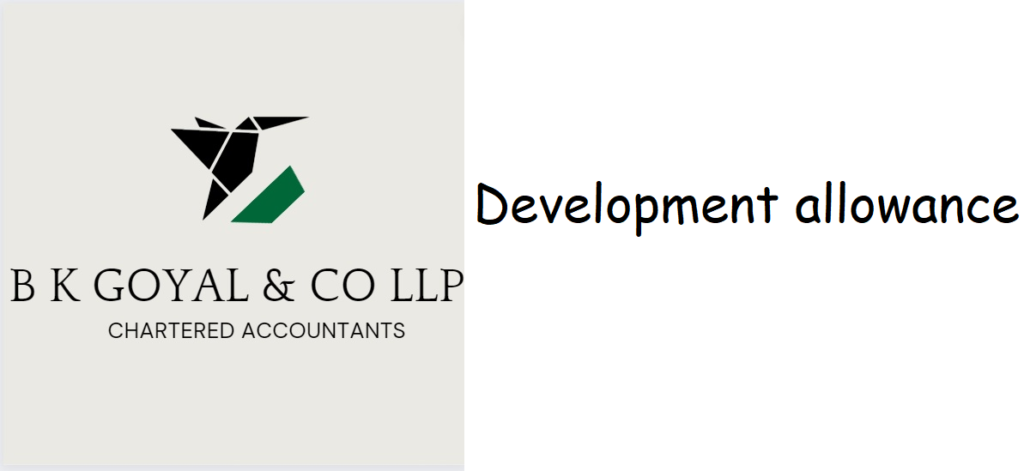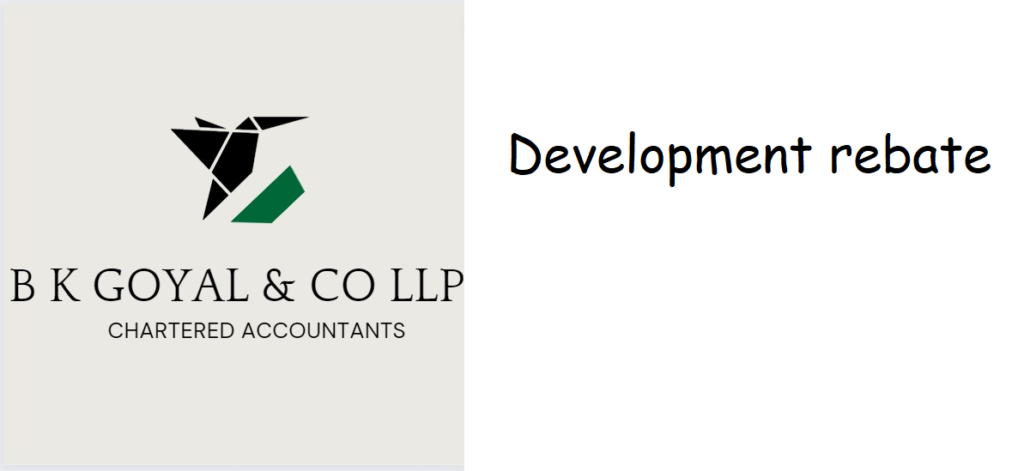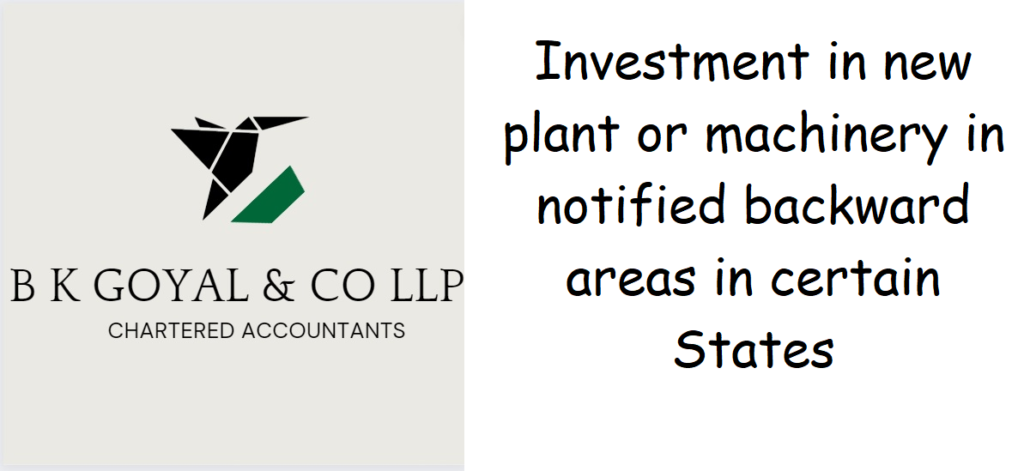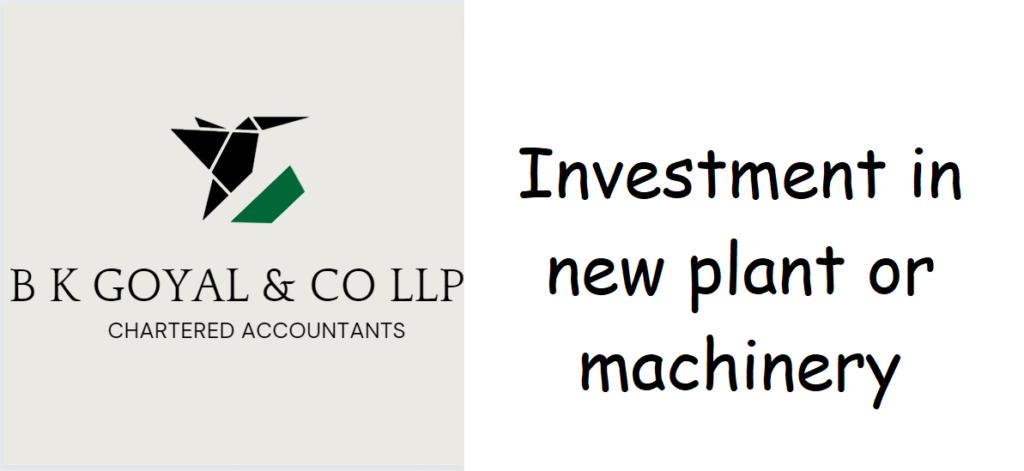Section 33, of Income Tax Act, 1961 states that (1)(a) In respect of a new ship or new machinery or plant (other than office appliances or road transport vehicles) which is owned by the assessee and is wholly used for the purposes of the business carried on by him, there shall, in accordance with and subject to the provisions of this section and of section 34, be allowed a deduction, in respect of the previous year in which the ship was acquired or the machinery or plant was installed or, if the ship, machinery or plant is first put to use in the immediately succeeding previous year, then, in respect of that previous year, a sum by way of development rebate as specified in clause (b). (b) The sum referred to in clause (a) shall be— (A) in the case of a ship, forty per cent of the actual cost thereof to the assessee; (B) in the case of machinery or plant,— (i) where the machinery or plant is installed for the purposes of business of construction, manufacture or production of any one or more of the articles or things specified in the list in the Fifth Schedule,— (a) thirty-five per cent of the actual cost of the machinery or plant to the assessee, where it is installed before the 1st day of April, 1970, and (b) twenty-five per cent of such cost, where it is installed after the 31st day of March, 1970; (ii) where the machinery or plant is installed after the 31st day of March, 1967, by an assessee being an Indian company in premises used by it as a hotel and such hotel is for the time being approved in this behalf by the Central Government,— (a) thirty-five per cent of the actual cost of the machinery or plant to the assessee, where it is installed before the 1st day of April, 1970, and (b) twenty-five per cent of such cost, where it is installed after the 31st day of March, 1970; (iii) where the machinery or plant is installed after the 31st day of March, 1967, being an asset representing expenditure of a capital nature on scientific research related to the business carried on by the assessee,— (a) thirty-five per cent of the actual cost of the machinery or plant to the assessee, where it is installed before the 1st day of April, 1970, and (b) twenty-five per cent of such cost, where it is installed after the 31st day of March, 1970; (iv) in any other case,— (a) twenty per cent of the actual cost of the machinery or plant to the assessee, where it is installed before the 1st day of April, 1970, and (b) fifteen per cent of such cost, where it is installed after the 31st day of March, 1970. 25(1A)(a) An assessee who, after the 31st day of March, 1964, acquires any ship which before the date of acquisition by him was used by any other person shall, subject to the provisions of section 34, also be allowed as a deduction a sum by way of development rebate at such rate or rates as may be prescribed, provided that the following conditions are fulfilled, namely :— (i) such ship was not previous to the date of such acquisition owned at any time by any person resident in India; (ii) such ship is wholly used for the purposes of the business carried on by the assessee; and (iii) such other conditions as may be prescribed. (b) An assessee who installs any machinery or plant (other than office appliances or road transport vehicles) which before such installation by the assessee was used outside India by any other person shall, subject to the provisions of section 34, also be allowed as a deduction a sum by way of development rebate at such rate or rates as may be prescribed, provided that the following conditions are fulfilled, namely :— (i) such machinery or plant was not used in India at any time previous to the date of such installation by the assessee; (ii) it is imported in India by the assessee from any country outside India; (iii) no deduction on account of depreciation or development rebate in respect of such machinery or plant has been allowed or is allowable under the provisions of the Indian Income-tax Act, 1922 (11 of 1922), or this Act in computing the total income of any person for any period prior to the date of the installation of the machinery or plant by the assessee; (iv) such machinery or plant is wholly used for the purposes of the business carried on by the assessee; and (v) such other conditions as may be prescribed. (c) The development rebate under this sub-section shall be allowed as a deduction in respect of the previous year in which the ship was acquired or the machinery or plant was installed or, if the ship, machinery or plant is first put to use in the immediately succeeding previous year, then, in respect of that previous year. (2) In the case of a ship acquired or machinery or plant installed after the 31st day of December, 1957, where the total income of the assessee assessable for the assessment year relevant to the previous year in which the ship was acquired or the machinery or plant installed or the immediately succeeding previous year, as the case may be (the total income for this purpose being computed without making any allowance under sub-section (1) or sub-section (1A) of this section or sub-section (1) of section 33A or any deduction under Chapter VI-A) is nil or is less than the full amount of the development rebate calculated at the rate applicable thereto under sub-section (1) or sub-section (1A), as the case may be,— (i) the sum to be allowed by way of development rebate for that assessment year under sub-section (1) or sub-section (1A) shall be only such amount as is sufficient to reduce the said total income to nil ; and (ii) the amount of the
